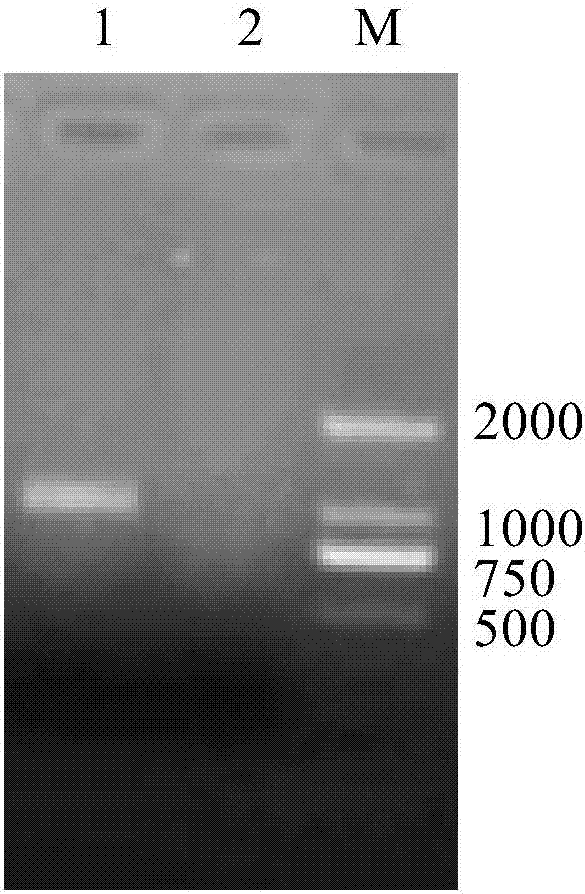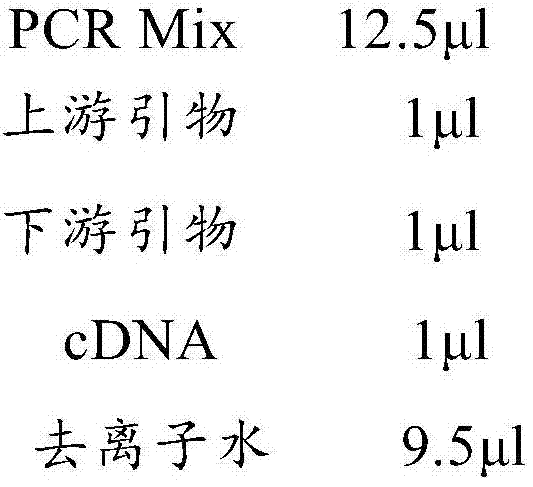Porcine rotavirus strain and inactivated vaccine prepared from strain as well as application
A porcine rotavirus inactivation technology, applied in vaccines, viruses, antiviral agents, etc., can solve the problems of product batch differences, high production costs, poor safety, etc., and achieve small differences between product batches and good immunity The effect of originality and low production cost
- Summary
- Abstract
- Description
- Claims
- Application Information
AI Technical Summary
Problems solved by technology
Method used
Image
Examples
Embodiment 1
[0022] Example 1 Isolation and identification of porcine rotavirus zyh25 strain
[0023] 1. Experimental method
[0024] 1.1 Isolation of virus
[0025] In 2016, from pigs suspected of having porcine rotavirus in a pig farm in Jilin Province, China, the small intestine tissue of sick pigs with typical clinical symptoms was aseptically cut into pieces, and added to sterilized pigs at a ratio of 1:5 (W / V) After normal saline and mortar grinding, freeze-thaw three times at -40°C / room temperature, centrifuge at 3000r / min for 15min, and take the supernatant for later use.
[0026] The supernatant of the above-mentioned disease material was sterilized through a 0.22 μm microporous filter, and inoculated with the cell maintenance solution containing trypsin at a final concentration of 10 μg / ml (serum-free DMEM medium containing 20,000 units of double antibody), and the Marc-145 For the T25 square flask of monolayer cells, inoculate 4 flasks of cells with each disease material, and ...
experiment example 1
[0046] Pathogenicity determination of the isolated porcine rotavirus zyh25 strain of Experimental Example 1
[0047] 1. Experimental method
[0048] 1.1 Proliferation of virus zyh25 strain in serum-free full suspension Marc-145 cells
[0049] After diluting the purified virus zyh25 strain with sterilized physiological saline, inoculate the cell density at 3-5*10 6 Cells / ml of serum-free fully suspended Marc-145 cells, in a 5% carbon dioxide incubator at 37°C, suspended on a shaker at 110rpm for 60-72 hours, when the number of dead diseased cells exceeds 75%, harvest the cell suspension and put it into- Freeze and thaw three times in a 70°C refrigerator to harvest the virus liquid. Passage 10 times until the virus proliferates well in Marc-145 cells suspended in serum-free whole.
[0050] 1.2 Virus median infective dose (TCID 50 ) determination
[0051] Marc-145 cells in good condition were mixed with 2~3×10 4 Inoculate a 96-well cell culture plate per well at 37°C, 5% CO...
experiment example 2
[0062] Experimental example 2 Immune protection experiment of porcine rotavirus zyh25 strain
[0063] 1. Experimental method
[0064] 1.1 Amplification of virus
[0065] The isolated virus zyh25 strain was amplified by Marc-145 cell roller bottle culture (collecting the cell culture supernatant) and inoculated with serum-free full suspension culture Marc-145 cells (collecting the culture supernatant), and the culture supernatant was harvested and separated. Packed and stored at -70°C for later use.
[0066] 1.2 Preparation of inactivated vaccine
[0067] The two virus liquids amplified by the spinner bottle process and the serum-free full suspension process were centrifuged at 5 000 r / min for 30 min, the supernatant was taken, and formalin solution with a final concentration of 0.1% (v / v) was added to inactivate at 37°C 48h. After the sterility test, the inactivated virus liquid supernatant was mixed with Marcol 52 white oil adjuvant at a volume ratio of 1:2.5, emulsified ...
PUM
 Login to View More
Login to View More Abstract
Description
Claims
Application Information
 Login to View More
Login to View More - R&D
- Intellectual Property
- Life Sciences
- Materials
- Tech Scout
- Unparalleled Data Quality
- Higher Quality Content
- 60% Fewer Hallucinations
Browse by: Latest US Patents, China's latest patents, Technical Efficacy Thesaurus, Application Domain, Technology Topic, Popular Technical Reports.
© 2025 PatSnap. All rights reserved.Legal|Privacy policy|Modern Slavery Act Transparency Statement|Sitemap|About US| Contact US: help@patsnap.com



